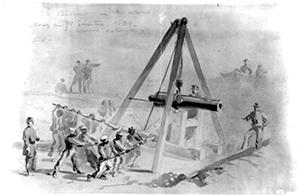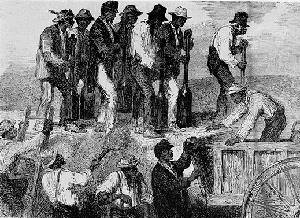The Myth of Black Confederates

What was the black Confederate soldier's myth? Over 150 years after the Civil War, many websites, articles, and organizations still assert that between 500 and 100,000 free and enslaved African Americans willingly served as soldiers in the Confederate army.
Patrick R. Cleburne, a prominent general in the Confederate Army of Tennessee, could see what was happening in the South in late 1863. Southern troops were outnumbered, soldiers were demoralized, and the institution of slavery was collapsing. So on January 2, 1864, Cleburne rode through a sleet-driven night in northern Georgia to present an audacious proposal to nearly a dozen Confederate generals.
He proposed that the Confederate States of America offer freedom to military age male slaves who were willing to fight for the South.
“Most of the generals denounced him,” says Bruce Levine, University of Illinois history professor and author of Confederate Emancipation and The Fall of the House of Dixie.
Cleburne’s proposal was overwhelmingly rejected, for secessionist states were not about to undermine the system of slavery that they were fighting to defend. But despite this clear disdain for the idea of arming African Americans, Levine says that over the past 30 years there has arisen a myth that black soldiers did fight for the Confederacy in massive numbers—tens of thousands and even hundreds of thousands, according to some accounts propagated online.
According to Levine, “The claims among modern romanticizers of the Confederacy are intended to bolster more fundamental claims—that African Americans identified with the Confederacy, that slaves were content with being slaves, and that the war had nothing to do with slavery.”
The problem is that the accounts of massive involvement of blacks in the Southern army are false, he says.
Levine says the Confederate army had a strict policy that if you were not certifiably white, you could not be a soldier in its ranks. However, in the early years of the Civil War, many slave owners did bring their servants into the Confederate army to carry equipment for them, and clean and take care of their clothes and horses. In addition, the Confederacy forced many slaves and free blacks in the South to labor for the war effort, building rail breastworks, driving wagons, burying the dead, and serving as nurses.
“On occasion, a slave might have even picked up a gun and taken a shot at the Yankees, proving how loyal and dependable he was,” Levine says. But this level of involvement is a far cry from tens of thousands of armed black soldiers marching in defense of the Confederacy.

What’s more, Confederates discovered that if they placed black laborers too close to Union lines, they ran the risk of African Americans fleeing to the other side; therefore, many slave owners stopped bringing along their black servants during the second half of the war.
Levine notes that there were two militias in the South made up of free African American soldiers—one in Mobile, Ala., and the other in New Orleans. But these were state militias, not part of the regular army, and they did not see serious action on behalf of the South. And numerous members of the “Native Guards” of New Orleans immediately switched allegiance to the Union when the Yankees occupied the city.
The Myth of the Black Confederates is a relatively new phenomenon, arising after the Civil Rights movement in the 1960s, Levine says. The notion of African Americans fighting in large numbers for the South was never suggested in the immediate aftermath of the war because white veterans would have been still alive to shoot down the idea. “White Confederate soldiers would have taken it as an insult to have served in the same army with the same status as a black soldier,” he says.
As evidence that black men fought heroically for the South, neo-Confederates today will sometimes dig up photos of black servants dressed in military uniforms. But according to Levine, “Some servants were dressed in military uniforms because that was the kind of clothing available in the army.” It didn’t mean they were real members of those army units, he says.
Levine says that when the Confederacy was on its last legs, in March of 1865, the Confederate congress did pass an eleventh-hour law by a razor-thin margin, allowing for the enlistment of black soldiers. But even that law freed no one.
“The Southern government invited masters to volunteer their slaves for the army, but first they would have to emancipate them because Jefferson Davis and Robert E. Lee knew that still-enslaved black men would certainly not fight for the South,” he says. “The overwhelming majority of masters declined that invitation.”
In the final weeks of the war, the South tried to recruit black soldiers in a handful of states, he says, “but nothing happened anywhere, except Richmond and Petersburg, where they apparently raised about 60 black soldiers in the Confederate army, who then saw virtually no action.”
In contrast, once black soldiers were accepted into the Union army in 1863, roughly 190,000 to 200,000 fought for the North. Even more telling, he adds, an estimated 80 percent of those soldiers were slaves and free blacks recruited by the Union army in slave states.
Editor’s note: We have included a new image and caption at the top of the story and an updated caption for the second image—February 2014








